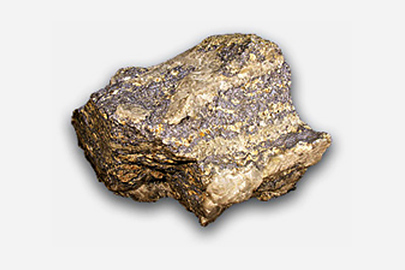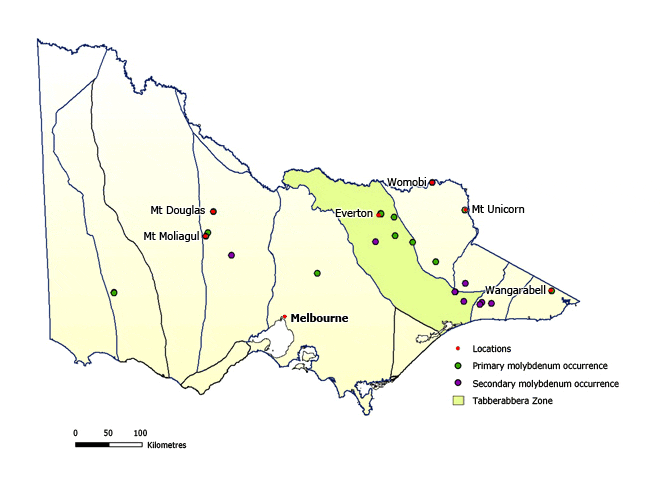Molybdenum

Molybdenum (Mo) is used as an alloying element for stainless steel and other metals. It enhances the resistance of metals to corrosion and their strength at high temperatures.
Molybdenum is also used as a refractory metal in chemical applications, for example, for catalysts, lubricants, and pigments. For most uses of molybdenum there is no acceptable substitute.
Although molybdenite (MoS2) has been found widely in Victoria, production has only been recorded from several deposits. The most significant of these was the Everton deposit. Like tungsten, molybdenum deposits are found mainly at the margins of highly fractionated and oxidised I-type granitic intrusions or adjacent to metamorphic aureoles, where they form during late magmatic hydrothermal activity. The deposits are commonly irregular vein networks, joint fillings, or disseminated flakes in pegmatite or aplite dykes.
At the Unicorn Mo-Cu-Ag Project in eastern Victoria, drilling has identified a significant resource associated with an Ordovician porphyry intrusion. Several nearby prospects are also being assessed.
Molybdenite is a minor component of most of the copper deposits in eastern Victoria. It is associated with Early Devonian intrusions including the Wangarabell, Croajingalong, and Genoa Peak granites in the far east of the State; the Everton Granodiorite in the Tabberabbera Zone; and the Moliagul Granodiorite, Mount Korong Granite and Mafeking Granite in western Victoria. There are also minor molybdenite occurrences near Gong Gong, Pittong, Maldon, Dromana, Yea, Violet Town (all Late Devonian), and Mount Stavely.
Mineralisation at the Everton deposit is in the form of a distinctive concentric pipe-like body. Between 1917 and 1944 the Everton mine produced approximately 325 tonnes of molybdenum concentrate. Mount Moliagul has been the subject of sporadic exploration and mining, but there has been little production from this area.
There have also been minor amounts of molybdenum production from Mount Douglas near Wedderburn, Wangarabell in East Gippsland, and the Womobi wolfram mine near Thologolong where molybdenum was produced as a by-product of tungsten mining.
Further information
Minerals of Victoria – Geological Survey of Victoria Report 92
Maps
To create your own maps online and in real time, plan exploration activities by viewing land status, or download GIS data to add to your own maps, visit GeoVic.

Page last updated: 02 Nov 2022